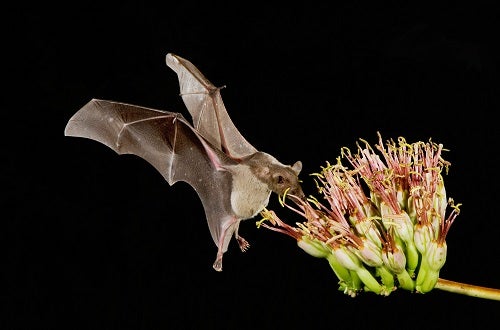When the lesser long-nosed bat was first listed as an endangered species 30 years ago, there were fewer than 1,000 bats in existence. Today, the bat’s population has grown to an estimated 200,000 bats living in 75 roosts across the southwestern United States and Mexico.

A lesser long-nosed bat feeding on an Agave blossom at night in Tucson, Arizona.
The lesser long-nosed bat is one of only three nectar-feeding bat species in the U.S. – uniquely providing valuable ecosystem services through bat pollination and the dispersal of fruit seeds, including for agave plants used in tequila production.
The relationship between bats and tequila may seem obscure at first, but the bat-plant association is so strong that the disappearance of one would threaten the survival of the other.
The lesser long-nosed bat is the first bat species to be removed from the endangered species list due to successful recovery. How the bat bounced back is not your typical conservation success story. Read More









